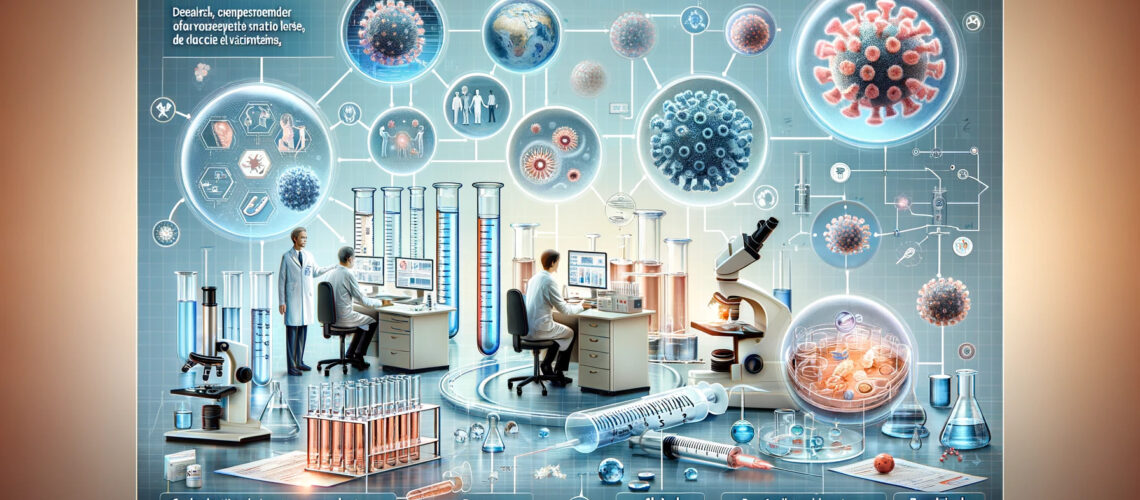In the realm of modern medicine, vaccines stand as one of the most remarkable achievements. They have saved countless lives and have been instrumental in controlling and even eradicating infectious diseases. The journey from a laboratory idea to a lifesaving vaccine is a complex and fascinating one. In this article, we will explore the vaccine development process, highlighting key stages and the remarkable impact vaccines have had on global health.
The Birth of a Concept
Vaccine development typically starts with the identification of a pathogen – a virus or bacterium – responsible for causing a particular disease. Scientists conduct extensive research to understand the pathogen’s biology, including its structure and genetic makeup. Once the pathogen is well-understood, they can begin crafting a strategy to combat it.
Antigen Identification
The cornerstone of any vaccine is the antigen. Antigens are specific molecules from the pathogen that stimulate the immune system to recognize and mount a defense against it. Identifying the right antigens is a critical step in the vaccine development process.
Researchers at institutions like GS Labs from Omaha, Nebraska, often collaborated with scientists worldwide to pinpoint the most effective antigens for a particular disease. These antigens can include proteins, sugars, or even genetic material from the pathogen.
Preclinical Research
Before a vaccine candidate can enter clinical trials involving humans, it must undergo rigorous testing in preclinical research. This phase primarily involves animal studies to evaluate the vaccine’s safety and effectiveness. Researchers closely monitor how the vaccine interacts with the immune system and assess its ability to provide protection.
Clinical Trials
The transition to human trials is a pivotal moment in vaccine development. Clinical trials typically consist of three phases:
- Phase I: This phase involves a small group of healthy volunteers who receive the experimental vaccine. The primary focus is on safety, determining the appropriate dosage, and observing the immune response.
- Phase II: In this phase, a larger group of participants, often hundreds, receive the vaccine candidate. Researchers assess its safety, dosage, and ability to generate an immune response in diverse populations.
- Phase III: The final phase involves thousands of participants and provides critical data on the vaccine’s efficacy and safety in real-world conditions. It helps determine whether the vaccine can prevent the target disease.
Regulatory Approval
Before a vaccine can reach the public, regulatory authorities, such as the Food and Drug Administration (FDA) in the United States, thoroughly review the data from clinical trials. They assess the vaccine’s safety, efficacy, and manufacturing quality. The process is rigorous and designed to ensure that only safe and effective vaccines make it to market.
Production and Distribution
Once a vaccine gains regulatory approval, the focus shifts to manufacturing and distribution. Mass production facilities work tirelessly to generate the vast quantities of vaccine needed to protect populations. This stage involves strict quality control measures to maintain the vaccine’s safety and effectiveness.
Challenges and Innovations
Vaccine development is not without challenges. Many potential vaccines do not make it past the preclinical or clinical trial phases due to safety concerns or lack of efficacy. Additionally, some diseases, like HIV, have proven exceptionally challenging to target with traditional vaccine approaches.
However, scientific advancements continue to drive innovation in the field. New technologies, such as messenger RNA (mRNA) vaccines, have enabled the rapid development of vaccines like the COVID-19 vaccines produced by Pfizer and Moderna. These breakthroughs hold promise for tackling previously intractable diseases.
Global Impact
The impact of vaccines on public health cannot be overstated. They have played a pivotal role in eradicating or controlling numerous diseases, such as smallpox, polio, and measles. According to the World Health Organization (WHO), vaccines prevent an estimated 2-3 million deaths worldwide every year.
Furthermore, vaccines contribute to substantial healthcare cost savings. For every dollar spent on immunization, it’s estimated that $16 are saved in healthcare costs, lost wages, and productivity due to illness.
Challenges in Vaccine Distribution
While vaccines are a cornerstone of public health, ensuring equitable access remains a challenge. Disparities in vaccine distribution, both globally and within countries, have become evident during the COVID-19 pandemic. Initiatives like COVAX, supported by organizations like the WHO, aim to address these disparities by providing vaccines to lower-income countries.
The Future of Vaccine Development
As we look to the future, the potential for vaccine development is exciting. Researchers are exploring novel approaches, including universal vaccines that could provide broader protection against multiple strains of a pathogen. Additionally, the lessons learned from the rapid development of COVID-19 vaccines will likely shape future vaccine development efforts, making them more efficient and effective.
In conclusion, vaccine development is a remarkable journey that begins in the laboratory and ends as a lifesaver. Through rigorous research, testing, and regulatory approval, vaccines have transformed our ability to combat infectious diseases. Their global impact on health and economies is undeniable, and ongoing innovation promises to expand their reach even further. As we navigate the challenges of our ever-evolving world, the importanc

